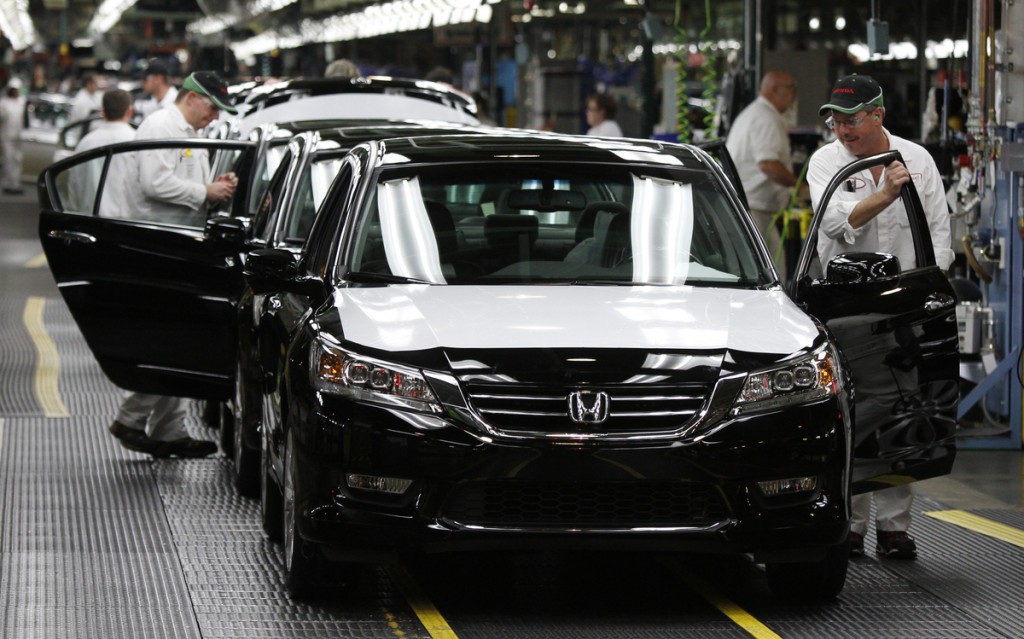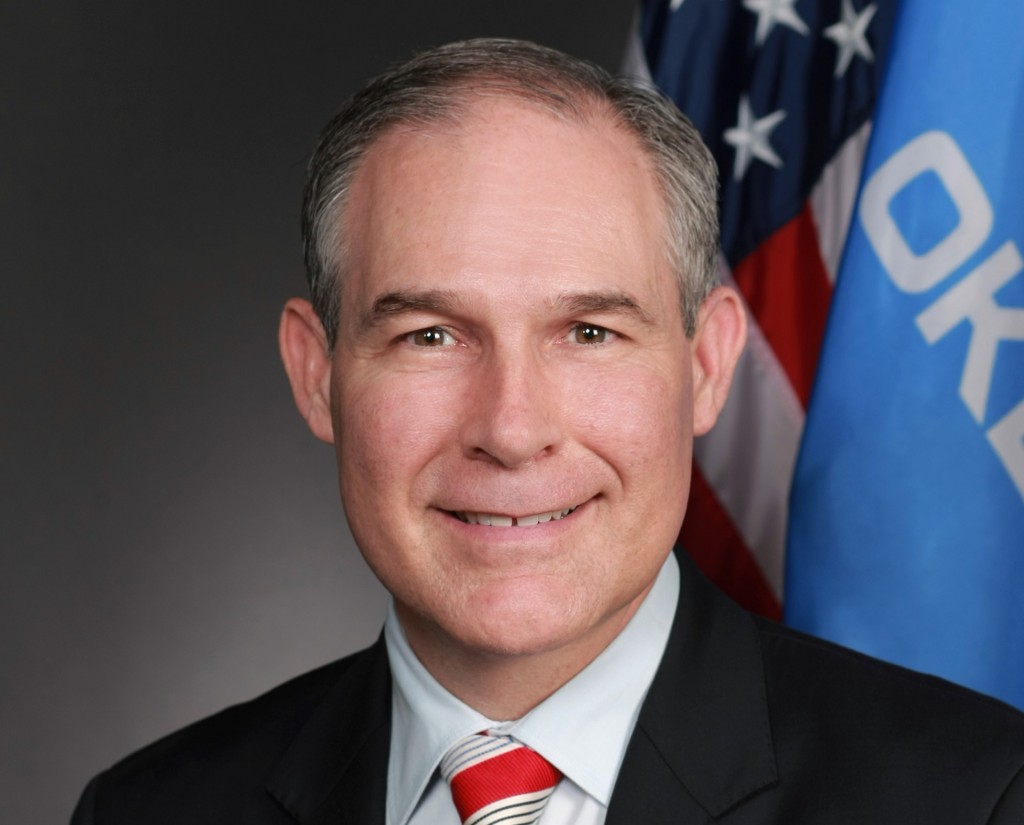
President Donald Trump (Photo courtesy Gage Skidmore/Wikimedia Commons)
One of the challenges of today's uber-polarized political environment is that fear and alarmism increasingly overtake the factual realities of an issue.
This appears to be the case with President Donald Trump's Wednesday appearance in Detroit to announce the reopening of the comment period for EPA emission rules for vehicles in model years 2022 through 2025.
To judge from a spate of statements and releases from various environmental organizations that followed, you might think that the president had single-handedly ended all fuel-economy rules for new cars.
He didn't.
DON'T MISS: EPA to reopen emission-rule review; how important is this step?
Trump appeared with Transportation Secretary Elaine Chao, General Motors CEO Mary Barra, and many other auto-industry executives at the American Center for Mobility in Ypsilanti, Michigan.
As The New York Times noted, the president said nothing about gasoline costs or climate change in his speech. Instead, he told carmakers to open new U.S. plants and import fewer cars from outside the country in exchange for his action in reducing the EPA's regulatory "burdens."
During his speech, the president made several questionable statements, as is his wont.
He said, for instance, that his government would end the "assault" on the auto industry. He did not add that two of the three Detroit automakers had been rescued from bankruptcy just eight years earlier by his predecessor's administration.

President Barack Obama looks at 2017 Chevrolet Bolt EV electric car at Detroit Auto Show, Jan 2016
Trump also claimed credit for jobs added by GM, which announced plans to rehire 680 laid-off workers at a transmission plant and add 220 new jobs in Michigan. (The president also called that number of jobs "peanuts," however.)
A GM spokesperson declined to credit Trump for those jobs, saying that the company hadn't fundamentally changed any of its manufacturing plans. Fiat Chrysler responded the same way to an earlier Trump claim for jobs that company had added.
In a restructuring earlier this year of its assembly operations, GM said it would open or retain 1,500 jobs as part of a $1 billion investment strategy.
Separately, it eliminated 3,300 jobs at several locations across the Midwest.
CHECK OUT: What White House faces if it actually tries to roll back fuel-economy standards
Trump's main announcement was that the Environmental Protection Agency would reopen a comment period on the 2022 through 2025 emission limits. The agency had ended that period 15 months ahead of schedule by finalizing its rules in January, just before he was inaugurated.
The decision to finalize those limits, he said, “would have destroyed, or further destroyed, the auto industry"—which, for the record, has just come off a second year of record vehicle sales in the U.S.
Trump's action was requested, many times, by virtually every carmaker selling in the U.S. and their lobbying arm, the Alliance of Automobile Manufacturers.
It will give the automakers a chance to submit further evidence for the EPA to assess on the change in the mix of vehicles purchased by U.S. buyers since the regulations were drafted in 2012: more and larger trucks, fewer fuel-efficient and smaller passenger cars.

2018 Ford F-150
More trucks, fewer cars
The industry claims it will not be able to meet the original standards given those changes, especially as sales of hybrid and plug-in electric cars remain minimal as a percentage of the overall total, at 3 to 4 percent.
Fiat Chrysler CEO Sergio Marchionne called the EPA's short-circuiting of the original schedule, which had stretched into 2018, "offensive" during a Bloomberg TV interview.
The carmakers' submissions will add to those already provided and cited in the agency's Technical Assessment Report, issued last summer.
The assessment concluded that automakers had met the first set of emission standards, for 2012 through 2017, at a lower cost than projected and using less electrification and more conventional technologies.
That trend would continue into the future, the EPA's analysts and scientists concluded, so the 2022-2025 emission limits did not need to be changed from those drafted in 2012.

Chrome exhaust pipe
Trump's action in reopening the comment period was widely misreported as covering fuel-economy standards, which are separately set by the NHTSA, a unit of the Department of Transportation—which is why Chao was there.
She noted that the two agencies would work together to set what she called "reasonable" standards for fuel economy and emissions.
Jobs expected in return
But Trump's action on the comment period came with an explicit quid pro quo to automakers:
“You need to come back and give us big numbers in terms of jobs,” Trump told the chief executive officers of General Motors Co., Ford Motor Co. and Fiat Chrysler Automobiles NV on Wednesday.
As a result of his action, automakers are "going to be building new plants, expanding their plants," he expounded.
"My administration will work tirelessly to eliminate the industry-killing regulations, to lower the job-crushing taxes, and to ensure a level playing field for all American companies and workers.”
Trump separately demanded that Toyota build new plants in the U.S. for any vehicles it planned to sell in the country.
He also explicitly downplayed the importance of fuel economy: “If it takes an extra thimble of fuel, we don’t want that to stop you,” Trump told automakers at the event.
Jobs unlikely to grow?
Some of the president's language echoes campaign rhetoric rather than reflecting any substantive actual policy changes.
The president may view this relatively small concession to industry as an opportunity to exert leverage and make points about jobs and factory sites—but automakers may be hard-pressed to live up to his suggestions.
Most industry analysts expect this year's vehicle sales to be flat or down, and few anticipate new U.S. auto factories opening in any volume in what is essentially a saturated market.
And with automakers focusing intently on not repeating the mistakes that killed profitability and took them into bankruptcy—producing more cars than the market demanded, and then heavily incentivizing buyers to take them—workers will likely be laid off when sales fall.

2013 Honda Accords on the assembly line in Marysville, Ohio, where they've been built for 30 years
Rallying the troops
None of that perspective showed up in the releases from environmental groups, however, which mostly contained a general tone of alarm that likely would never have occurred if the EPA had stuck to its original schedule for the midterm review.
Some of those releases incorrectly referred to Trump's action as applying to fuel-economy standards, or CAFE, rather than tailpipe emissions.
We did appreciate the Sierra Club, however, which noted: "At the end of Trump's speech today, he made the outlandish claim that he was the first president to invite the automakers into the Oval Office."
In fact, the group pointed out, most recently President George W. Bush invited the heads of the auto industry into his office in 2006, and it had happened several times before that as well.
At the other end of the spectrum, the Heartland Institute, funded by fossil-fuel interests, issued a release that inaccurately claimed Trump was "directing the Environmental Protection Agency (EPA) to review the Obama-era fuel-efficiency mandate for automobile fleets."
As noted above, the EPA sets emission standards and the NHTSA sets fuel-economy standards, although since 2012 the two sets of regulations have been synchronized because carbon-dioxide emissions are inversely proportional to fuel economy.

Oklahoma attorney general Scott Pruitt, 2014
Climate change, however ...
The institute's release also contained multiple quotes hoping that future changes to, or abolition of, the standards would lead to greater consumption of oil.
The group, it should be noted, is a proud and shrill denier of climate science, producing regular "studies" that "disprove" the accepted scientific consensus on climate change.
Given Trump's stated intention to roll back every effort made by the Obama Administration to limit emissions of climate-change gases, that's an area that may be worthy of more serious alarm.
The administration's views and actions around climate science, which both the president and EPA administrator Scott Pruitt have denied and denigrated.
Take, for instance, a comment yesterday by Mick Mulvaney, the White House budget director.
In defending the president's budget proposal—which will not be enacted as is, but serves as a starting point for negotiations over the budget that Congress will pass—Mulvaney commented on the fact that Trump's budget zeroes out research into climate science.
“We’re not spending money on that any more," Mulvaney said. "We consider that to be a waste of your money.”
Green Car Reports respectfully reminds its readers that the scientific validity of climate change is not a topic for debate in our comments. We ask that any comments that deny the accepted scientific consensus on climate change be flagged for moderation. Thank you in advance for helping us keep our comments on topic, civil, respectful, family-friendly, and fact-based.
_______________________________________













